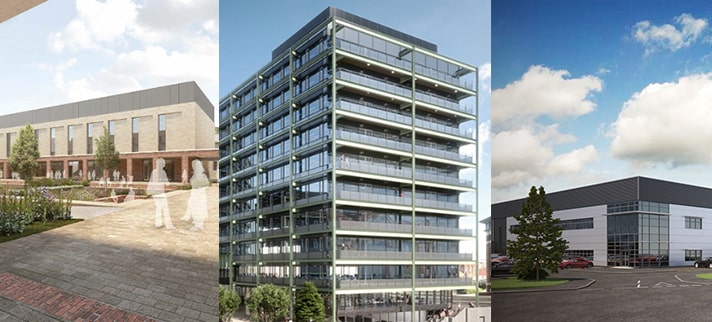Sectors - Commercial
Diversification Vital for Firms’ Survival

While the construction industry is buoyed by lockdown restrictions easing, and 56% of projects that were previously suspended are now back on-site, there is a deep concern about what happens next, and where future opportunities will come from.
As the UK faces the possibility of another recession, leading business analysts are encouraging diversification strategies to spread risk and maintain businesses throughout the crisis.
The commercial property sector is possibly most likely to be hit first, with office in a state of flux regarding whether employees will return and continue to work at pre-Coronavirus volumes.
The development pipeline appears firm right now, with 1,080 projects being approved throughout the UK in the last three months, a six per cent increase than this time last year. It remains to be seen in investors will progress these to site, caution and preparing to spread risk now would be prudent.
A recent report entitled ‘COVID-19: UK industry focus. Where next for real estate?’ from Strategy& – part of the PwC network – states that “42% of workers can work from home”, and “In the worst-case scenario, real estate companies would be left with expensive, significantly devalued assets on their balance sheets for which there is no demand.”
So it stands to reason that, should firms be solely focused on office construction, they should be looking elsewhere as well, in order to spread their risk and avoid the worst-case scenario if it were to arise.
Some manufacturing business are also at risk should they decide to remain focused on their ‘old-normal’ way of doing business. Strategy& states in their report “COVID-19: UK industry focus. Where next for industrial manufacturing?” that: “Our figures suggest the industrial manufacturing sector will be hit harder than the economy as a whole, with a possible productivity fall of more than 30%”, and “Whether making parts or assembling products, manufacturers with a broader, more diverse set of customers will fare better than those who specialise in serving specific industries.”
If history has taught us anything, it is that short-term measures taken in response to a global crisis lead to changes which can last for decades. And, manufacturers that can identify new opportunities to meet newly created needs will have ample opportunity for growth.
For example, Tharsus, an advance robotics company, has developed ‘Bump’, a new cutting-edge technology system that is designed to help keep people safe in the workplace during the Coronavirus pandemic.
Alloy Wire International has also been commissioned to produce more than 5km of material that will be used to produce crucial parts to use in life-saving equipment destined for the Nightingale Hospital in London.
Another example is Coventry-based flooring manufacturer, Amtico, which has modified its manufacturing facilities in order to produce up to 20,000 parts for protective face shields per day.
But, how can business that are entrenched in one single way of working and supplying one sector quickly turn around and be involved in other areas in which they may not have first-hand experienc? PwC’s Strategy& again has some useful advice to “use demand signals such as customer leads and market insight to inform recovery, preparing for different scenarios depending on the length and nature of lockdown.”
The more businesses can diversify the types of projects they work on, or supply, the better position they’ll be in to spread risk, and weather the storm.
This piece originally was published by Glenigan
If you would like to read more like this, then please click here
Related Articles
Related Articles
- Cinema Boosts Leisure Work for JPG
16 Dec 21
JPG Group has announced that it is set to provide consultancy services for the delivery
- Winvic Completes DSV 3 Building Facility
9 Dec 21
Winvic Construction Ltd has completed a 522,000 square ft industrial facility and offices for global
- Low-Carbon Office Redevelopment Secured
25 Nov 21
ISG has been awarded a major project to redevelop One Millennium Bridge, by Beltane Asset





